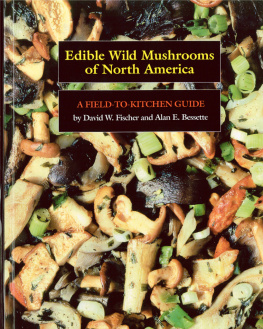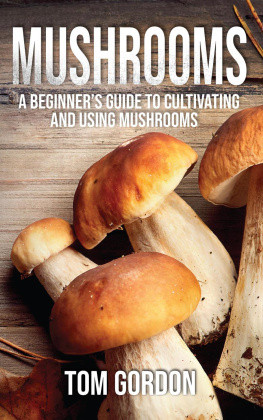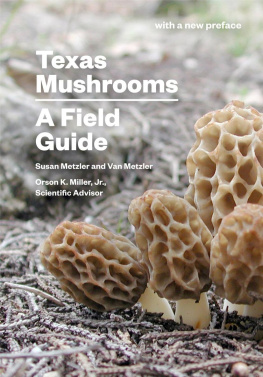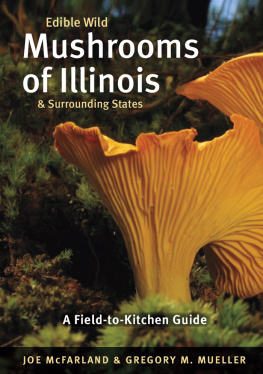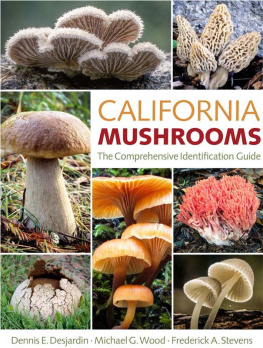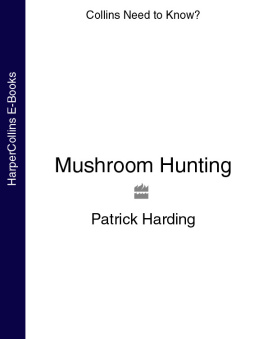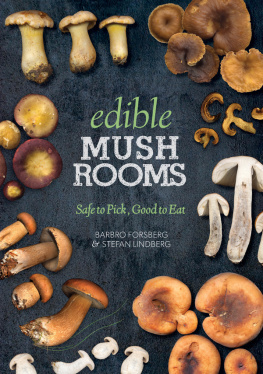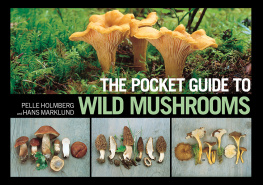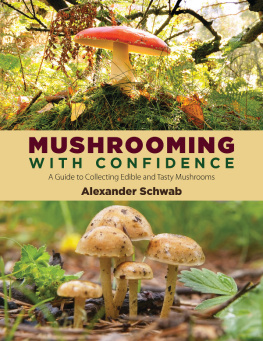EDIBLE WILD MUSHROOMS OF NORTH AMERICA

Edible Wild Mushrooms
of North America
A FIELD-TO-KITCHEN GUIDE
BY DAVID W. FISCHER AND ALAN E. BESSETTE
University of Texas Press, Austin 
Copyright 1992
by David W. Fischer and Alan E. Bessette
All rights reserved
Printed in China
Eighth paperback
printing, 2011
Requests for permission to reproduce material from this work should be sent to:
Permissions
University of Texas Press
P.O. Box 7819
Austin, TX 78713-7819
www.utexas.edu/utpress/about/bpermission.html
All photographs are by Alan E. Bessette except where indicated with initials at bottom of the photograph.
DA David Arora
TB Timothy J. Baroni
JB Jack Billman
JC John F. Connor, Jr.
WG Warren Greene
EJ Emily Johnson
GL Gary H. Lincoff
OM Orson K. Miller, Jr.
SM Susan Mitchell
ARB Arleen Rainis Bessette
KS Kit Scates-Barnhart
JS Joy Spurr
WS Walter J. Sundberg
ST Steve Trudell
All black-and-white drawings are by Philippa Brown.
LIBRARY OF CONGRESS CATALOGING-IN-PUBLICATION DATA
Fischer, David W. (David William), 1959
Edible wild mushrooms of North America : a field-to-kitchen guide / by David W. Fischer and Alan E. Bessette. 1st ed.
p. cm.
Includes bibliographical references and index.
ISBN 978-0-292-72080-0 (alk. paper)
ISBN 978-0-292-74594-0 (e-book)
ISBN 978-0-292-79248-7 (individual e-book)
1. Mushrooms, EdibleNorth AmericaIdentification. 2. Mushrooms, PoisonousNorth AmericaIdentification. 3. Cookery (Mushrooms). I. Bessette, Alan. II. Title.
QK617.F53 1992
589.22204632097dc20 91-24351
Recipes
Appetizers
Soups and Stews
Salads
Vegetables
Main Courses
MEAT
POULTRY
Main Courses
FISH AND SHELLFISH
PASTA
Meatless, or Nearly So
Sauces and Gravies
Accompaniments
Dessert

Sulphur Shelf (Laetiporus sulphureus) WG
Preface
Throughout North America, people gather and eat certain species of edible wild mushrooms with which they are familiar. In many cases, such knowledge of edible fungi is a folk phenomenon, based upon information handed down from generation to generation. European and Asian ancestry is especially responsible for this practical familiarity.
Most mycophagists, or people who eat wild mushrooms, are familiar with only a few edible species. Some people know about morels, others collect boletes, and some enjoy the Giant Puffball. But this folk knowledge is very limiting. Most people are skeptical of the idea that a large number of mushroom species can be easily identified and safely eaten. They have, in the great melting pot of the New World, inherited mycophobiathe fear of mushroomsthat is typical of Anglo-Saxon heritage. Wild mushrooms have a reputation for being mostly poisonous, and the common perception is that the edibles are nearly impossible to safely identify.
To some extent, these perspectives are valid. There are many poisonous species of mushrooms, and some are potentially life-threatening. It is also true that many mushrooms are difficult to correctly identify. Beyond these facts, though, is an important point: dozens of common delicious edible wild mushrooms can be identified very easily, even by beginners. That is the reason for this book.
Fear of mushrooms must be waning somewhat because the number of people interested in edible wild fungi is soaring. Local and regional mushroom clubs membership rosters are swelling with novices whose primary interest is in identifying edible wild mushrooms. The information explosion of the last decade made many people aware of such wild gourmet mushrooms as chanterelles, morels, boletes, and puffballs.
Ironically, some experienced mycologistspeople who study fungiare nervous about encouraging beginners. Many novices are too self-confident, too dependent upon color pictures for identifying species, simply too anxious to pick something and eat it. In the face of carelessness, accidents happen, and no one wants to be blamed.
The rule governing edibility of any food you identify is simple: eat nothing unless youre absolutely sure it is safe. When people find out about our interest in eating wild mushrooms, they invariably ask, How can you tell which are edible and which are poisonous? The answer is a simple analogy. How do we know that frog legs are edible and toad legs arent? We read, we learn, we study; in short, we educate ourselves about such things, thereby gaining cumulative knowledge of the subject. There is usually a follow-up question: Arent you afraid of making a mistake and poisoning yourself? The answer is no, and the frog-and-toad analogy works again: until you can tell a frog from a toad, dont catch your own frogs for dinner.
For the person who wishes to learn how to identify and prepare edible wild mushrooms, starting out can be difficult. The problem is that most field guides are not primarily oriented toward edible mushrooms. They present long, detailed descriptions of mushrooms, often using an extensive vocabulary of terms peculiar to botany or mycology. This book is intentionally different. It is specifically designed to help the beginner identify and prepare the most commonly eaten wild mushrooms of North America. Experienced mycophagists can also use this book to increase the number of edible species they can identify with confidence.
Acknowledgments
This book is the product of a great deal of work by many people besides the authors. Our special thanks go to Arleen Rainis Bessette, who spent months collecting wild mushrooms and using them to create dozens of wonderful new recipes for this book. She also arranged and composed most of the recipe photographs, contributed several photographs, and read the manuscript and made numerous helpful suggestions. Dr. Barry L. Wulff, Dr. Paul F. Lehmann, and Stephen Rains also reviewed the manuscript; their comments, suggestions, and criticisms improved this work immeasurably. Dr. Joseph F. Ammirati critiqued the section on mushroom toxins; we are grateful for his expert assistance. Several individuals contributed photographs: we thank David Arora; Dr. Timothy J. Baroni; Jack Billman; John F. Connor, Jr.; Warren Greene; Emily Johnson; Gary H. Lincoff; Dr. Orson K. Miller, Jr.; Susan Mitchell; Kit Scates-Barnhart; Joy Spurr; Dr. Walter J. Sundberg; and Steve Trudell. The outstanding illustrations throughout this book were created by Philippa Brown. We greatly appreciate the many wonderful recipes contributed by numerous fungal gourmets. Joe and Laura Bess, Leisa Fischer, George and Rose Fischer, Maura G. Howe, Richard and Jean Howe, and Marian Martin deserve special thanks for their support and encouragement. Both of us are grateful to the members of the Mid York and Central New York Mycological societies and the North American and Rochester Area Mycological associations for their support and enthusiasm. Bill Chapman and Sally Reymers kindly helped in the selection of specimen photographs. Finally, we thank the entire staff at the University of Texas Press. The quality of design and photographic reproduction evident in this book are only the most visible characteristics attesting to their high standards.
PART ONE
DISCOVERING MYCOPHAGY

Next page
